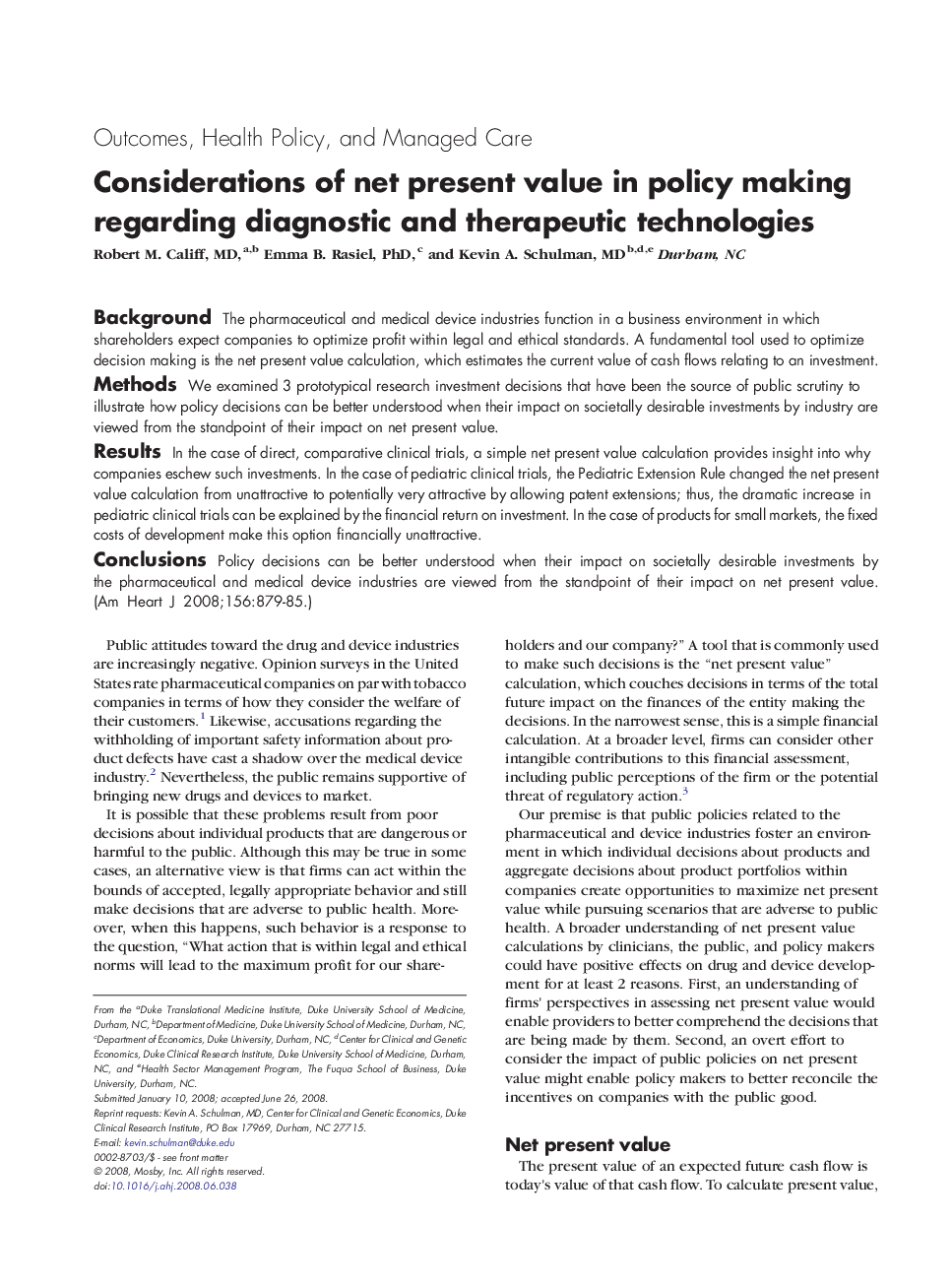| Article ID | Journal | Published Year | Pages | File Type |
|---|---|---|---|---|
| 2850694 | American Heart Journal | 2008 | 7 Pages |
BackgroundThe pharmaceutical and medical device industries function in a business environment in which shareholders expect companies to optimize profit within legal and ethical standards. A fundamental tool used to optimize decision making is the net present value calculation, which estimates the current value of cash flows relating to an investment.MethodsWe examined 3 prototypical research investment decisions that have been the source of public scrutiny to illustrate how policy decisions can be better understood when their impact on societally desirable investments by industry are viewed from the standpoint of their impact on net present value.ResultsIn the case of direct, comparative clinical trials, a simple net present value calculation provides insight into why companies eschew such investments. In the case of pediatric clinical trials, the Pediatric Extension Rule changed the net present value calculation from unattractive to potentially very attractive by allowing patent extensions; thus, the dramatic increase in pediatric clinical trials can be explained by the financial return on investment. In the case of products for small markets, the fixed costs of development make this option financially unattractive.ConclusionsPolicy decisions can be better understood when their impact on societally desirable investments by the pharmaceutical and medical device industries are viewed from the standpoint of their impact on net present value.
